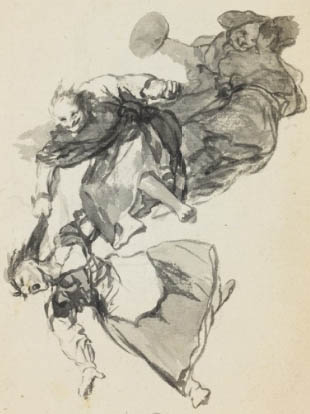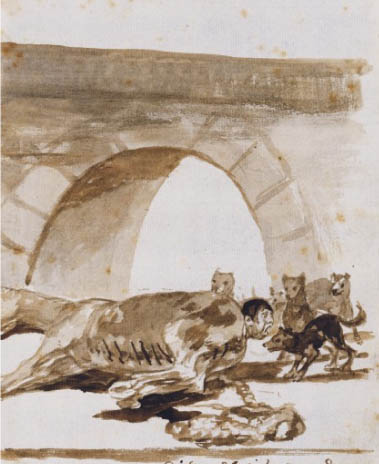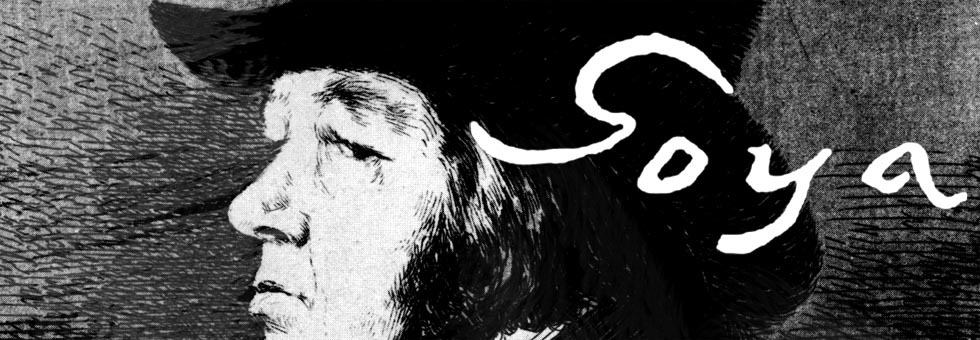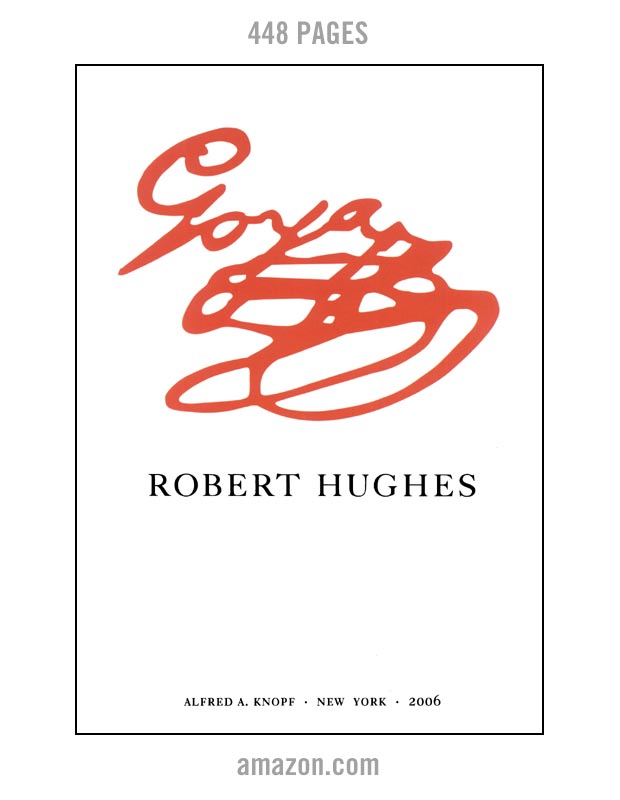3 Goya Drawings auction at twice the pre-sale estimate
[Note: See the original news item about the sale estimates here.]
Reuters has reported on the 4 million euro auction price that came together for the three Goya drawings put up at Christies (London) July 8, 2008:
"The drawings, sold by Christie's in London, were last recorded at a Paris sale of works by the artist in 1877 and all come from Goya's celebrated private albums.
They were sold from a Swiss private collection and were in "exceptional" condition because they were never framed or exposed to light.
The top lot of the three was "Down They Come", from album D called "Witches and Women", depicting four women fighting as they fly through the air.
It sold for $4.5 million (2.28 million pounds), a world record at auction for a Goya work on paper and more than twice the pre-sale estimate."
Results from recent auctions at Christies:
[Lot 65] Goya Drawing: Bajan riñendo - They Go Down Fighting

£2,281,250 ($4,514,594 USD)
From a private Swiss Collection
9¼ x 5 5/8 in. (234 x 143 mm)
From Goya Album "F"
From the Christie's auction notes page (attributed help by Juliet Wilson-Bareau):
Francisco José de Goya y Lucientes (Fuendetodos 1746-1828 Bordeaux)
Bajan riñendo (They go down quarrelling) or Vision de bajar riñendo (Vision: going down quarrelling) inscribed by the artist in black chalk 'Vision de bajar riñendo' (over 'Bajan riñendo') and numbered by the artist '2' in black chalk (corrected by him to '1' or possibly '5' in pen and ink) at upper centre (album D) and with Madrazo's number '47' (Madrazo album III) in pen and ink at upper rightbrush and grey wash, scraping 9¼ x 5 5/8 in. (234 x 143 mm.)
[Lot 67] Goya Drawing: Constable Lampiños stitched into a dead horse
"En Zaragoza à mediados del siglo pasado, me tieron à un alguacil llamado Lampiños, en el cuer- po de un Rocin muerto, y lo cosieron ; toda la noche se mantubo vivo"

£769,250 ($1,522,346 USD)
From a private Swiss Collection
8 1/8 x 5 5/8 in. (205 x 142 mm)
From Goya Album "F"
From the extensive notes at the Christie's web site:
It is one of the very rare drawings from Goya's private albums to be extensively annotated by Goya in pen and ink. The inscription reads: 'In Saragossa around the middle of the last century they put a constable called Lampiños in the body of a dead nag; and he stayed alive for the whole night'. One can see only the horrified head of the man stitched inside the dead horse (could the word 'rocin' used by Goya be a conscious reference to Rocinante, Don Quixote's horse?) in front of a large arch, with excited dogs barking, attracted by the animal's entrails which lie on the ground.
Although lost from view since its appearance in the Paris 1877 sale, the drawing has recently been revealed as one of the very few described in his Journal by William Stirling, later Sir William Stirling Maxwell (1818-1878), the pioneering English collector and historian of Spanish art, following a visit to Javier Goya's home in 1849...
[Lot 66] Goya Drawing: Repentance "Le repentir"

£959,650 ($1,899,147 USD)
From a private Swiss Collection
8¼ x 6 in. (210 x 152 mm)
From Goya Album "F"
From the Christie's extensive online notes about this drawing:
On the present drawing, the inscription in pencil and in French is a much later addition ['Le repentir'], probably copied from the 1877 Paris sale catalogue. This sheet was page '47' of the original bound album but it bears two other numberings applied by Federico de Madrazo. This shows that when Madrazo took it out of one of Javier Goya's large albums he evidently moved it from one to another of his own three albums.
Drawings from Album F are usually executed only in brown wash but on this one Goya also extensively used a bright carbon-grey wash to suggest the forms of rocks and the interior of a cave in the background, conveying a remarkable sculptural quality to the figure. The drawing, brushed with breathtaking freedom, has a finished appearance which is unusual in sheets from Album F. For the head (which was originally positioned further forward) and the hands, Goya has used with extraordinary virtuosity a thinner brush (but no pen) and a brown ink lighter in tone.
...this one does not seem to be part of a sequence.
...Goya also treated the subject of repentance in one of his last religious pictures, executed around 1820, now in the Phillips Collection, Washington, The Repentant Saint Peter.

One other note, the price on an appparent first edition of Caprichos Author portrait page:

£3,450 ($5,647 USD)
July 8 "Old Master Prints"
Christie's page on this item
AMAZON
Goya The Terrible Sublime - Graphic Novel - (Spanish Edition) - Amazon
"From this headlong seizure of life we should not expect a calm and refined art, nor a reflective one. Yet Goya was more than a Nietzschean egoist riding roughshod over the world to assert his supermanhood. He was receptive to all shades of feeling, and it was his extreme sensitivity as well as his muscular temerity that actuated his assaults on the outrageous society of Spain." From Thomas Craven's essay on Goya from MEN OF ART (1931).
"...Loneliness has its limits, for Goya was not a prophet but a painter. If he had not been a painter his attitude to life would have found expression only in preaching or suicide." From Andre Malroux's essay in SATURN: AN ESSAY ON GOYA (1957).
"Goya is always a great artist, often a frightening one...light and shade play upon atrocious horrors." From Charles Baudelaire's essay on Goya from CURIOSITES ESTRANGERS (1842).
"[An] extraordinary mingling of hatred and compassion, despair and sardonic humour, realism and fantasy." From the foreword by Aldous Huxley to THE COMPLETE ETCHINGS OF GOYA (1962).
"His analysis in paint, chalk and ink of mass disaster and human frailty pointed to someone obsessed with the chaos of existence..." From the book on Goya by Sarah Symmons (1998).
"I cannot forgive you for admiring Goya...I find nothing in the least pleasing about his paintings or his etchings..." From a letter to (spanish) Duchess Colonna from the French writer Prosper Merimee (1869).
GOYA : Los Caprichos - Dover Edition - Amazon




